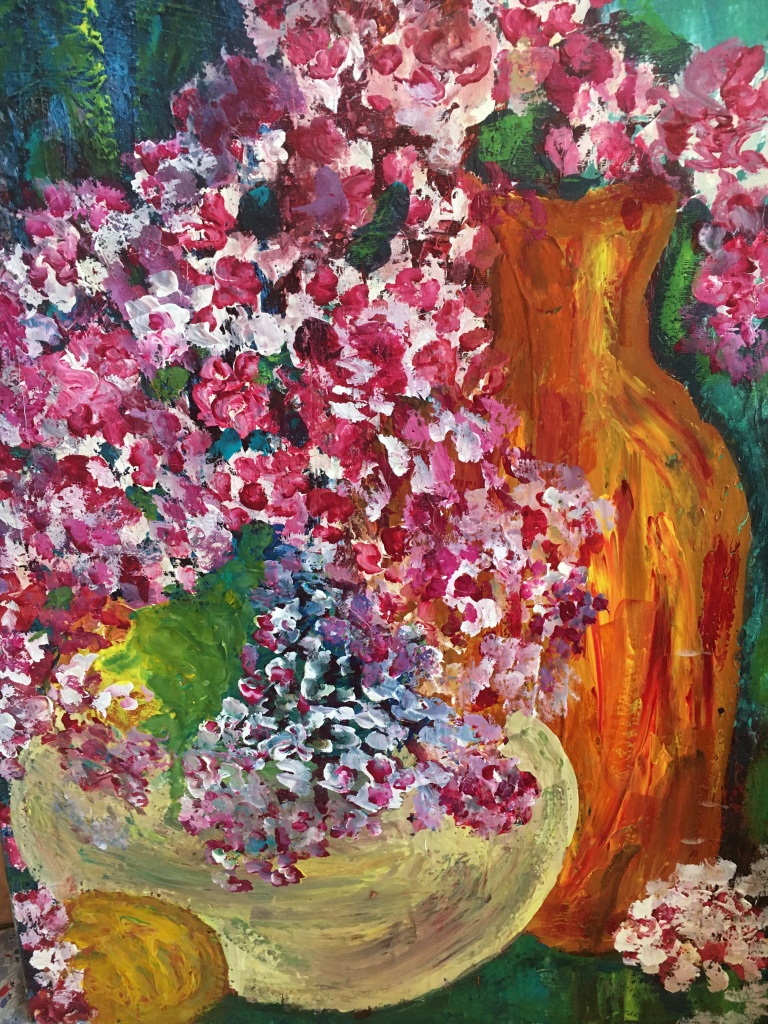
When I began my art journey 15 years ago, I ordered art books and researched everything I could about water mediums. Instinctively I knew that oils—perhaps the most classic of all paints—were off limits to me, given my asthma and some nebulous irreversible lung disease which is currently non-threatening.
Although I love the transparent quality of watercolor paint, I have always been inspired to add dimension and texture to my work. From the start, I attempted to build texture with watercolors, achieving some vibrant depths of color. But the rough and rugged visuals I was after were beyond my reach until, via the art books, I discovered gouache.
Gouache can be thinned with water to achieve some degree of transparency. But straight from the tube, gouache quickly provides layers of impasto—almost simulating the appearance of oils. Unlike watercolors, gouache can be layered light over dark. In the above painting done with gouache on a gallery wrap canvas panel, you can see that I started with a heavy layer of blues and greens, and then painted the vase, flowers, etc.
Like watercolors (but unlike acrylics) gouache can be scrubbed away. So I always spray the canvas renderings with an acrylic fixative. The fixative is available in matt and gloss; I prefer the less popular but more glitzy look of gloss. Of course no fixative is needed for paintings on watercolor paper (I use 140# or heavier) framed behind glass.
In the early years of artmaking, I used gouache sparingly—mainly to add touches of white or to camouflage a boo-boo. Then gradually I began to use more and more blotches of color, until now when I have a drawer packed with every possible color of Da Vinci’s 37ml professional gouache. On some occasions, as in the above painting, I use gouache exclusively.
Unlike acrylics which are death to brushes, gouache is kind to the watercolor brushes. When well care for, washed after every using and always positioned to dry “brush up”, the brushes may last forever. I have had most of my brushes for years, starting with a few excellent ones and building a collection.
And, gouache paint is amazingly inexpensive. It’s a win/win deal. 🙂 Gouache is good!
Margaret L. Been — February 4th, 2021




















